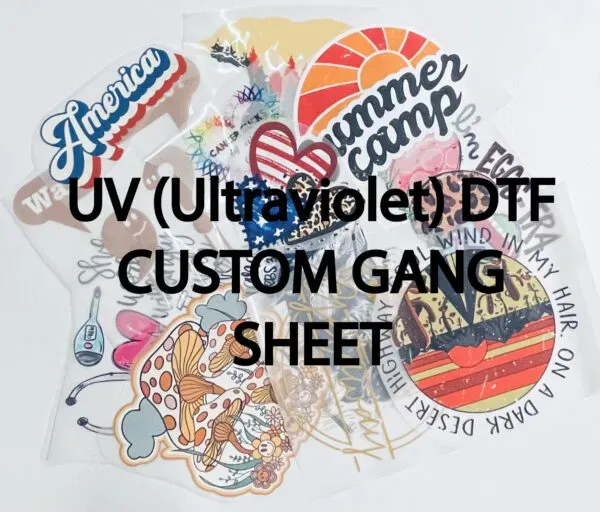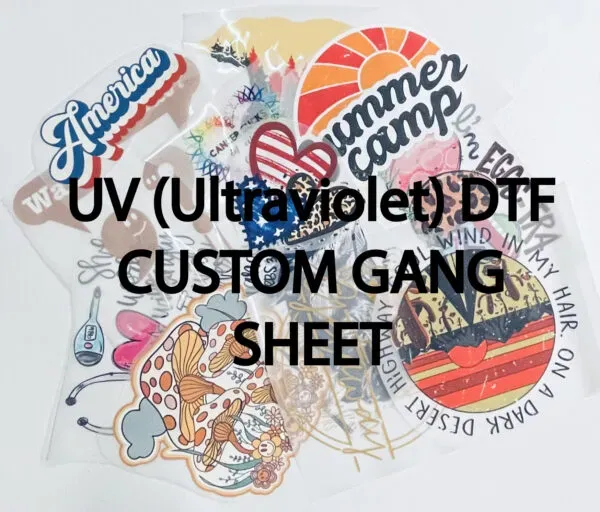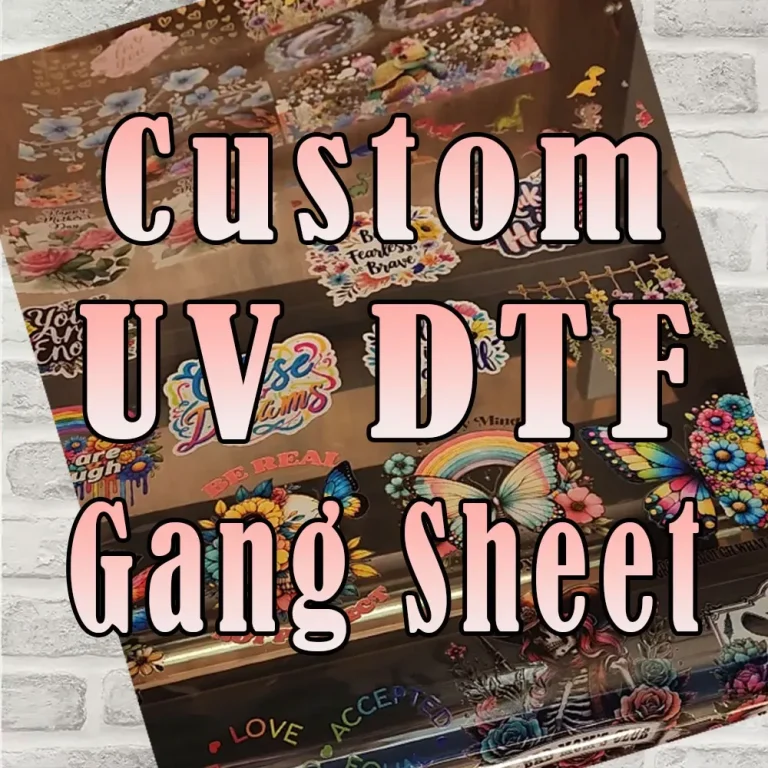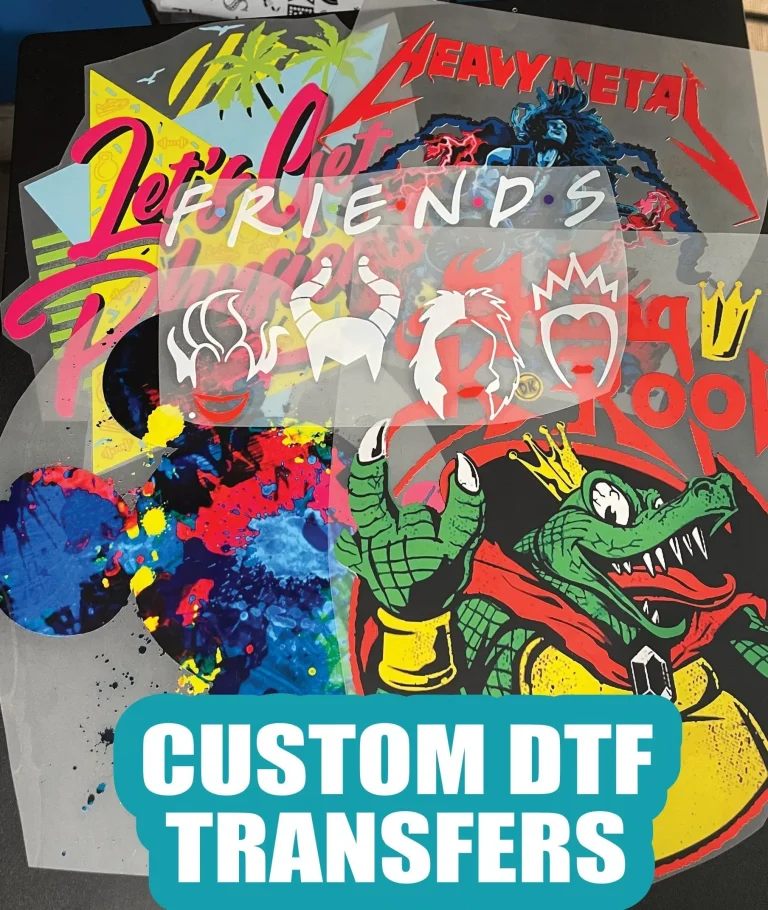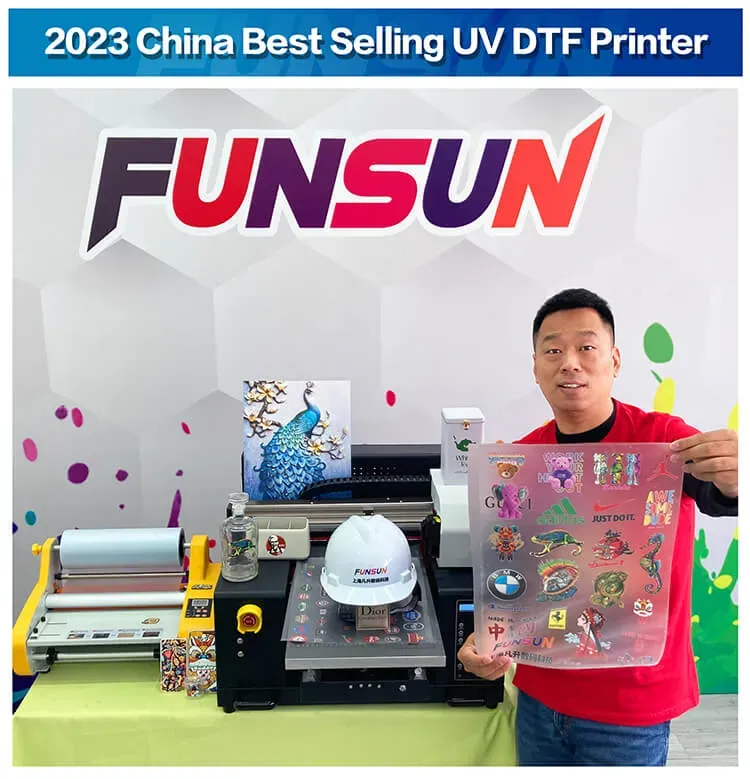UV DTF Gangheet: Everything You Need to Know About It
UV DTF Gangheet marks a significant breakthrough in garment printing, introducing an innovative method that combines UV printing technology with Direct to Film (DTF) techniques. This cutting-edge approach ensures that custom apparel not only features vibrant and detailed designs but also boasts exceptional durability, making it a top choice for textile businesses and individual creators alike. One of the standout benefits of UV DTF is its ability to produce stunning visuals on various materials, enhancing the versatility of garment printing offerings. As sustainability becomes a vital consideration in all industries, UV DTF stands out as a sustainable printing solution due to its environmentally friendly inks that emit fewer volatile organic compounds (VOCs). Join us as we explore the multifaceted benefits of UV DTF Gangheet and how it is reshaping the landscape of custom printing.
In the realm of innovative printing solutions, UV DTF (Direct to Film) technology is redefining how we approach custom garment creation. This advanced system, which involves applying UV-curable inks, allows for vivid imagery that endures, satisfying the growing demand for unique apparel. The remarkable capabilities of UV DTF streamline processes while offering broader customization options, making it an attractive alternative to traditional methods. Alongside its aesthetic advantages, this technology also supports eco-conscious practices in the printing industry, positioning it as a preferred choice for businesses committed to sustainable printing solutions. As we delve deeper into the world of UV DTF Gangheet, it becomes clear that its impact on custom apparel is just beginning.
Revolutionizing Custom Apparel with UV DTF Gangheet
UV DTF Gangheet is at the forefront of revolutionizing the custom apparel industry. With its advanced UV printing technology, this method allows designers and brands to produce high-quality, vibrant graphics that truly represent their artistic vision. The process involves printing detailed designs onto a specialized transfer film, which is then applied to various types of garments. This not only enhances the aesthetic appeal of the apparel but also opens new avenues for creativity in design, allowing for intricate details and a broader color spectrum than traditional methods.
Furthermore, the impact of UV DTF Gangheet extends beyond just improved visuals. As businesses and consumers increasingly seek unique, personalized clothing options, this technology meets that demand efficiently. The ability to output custom designs quickly means brands can respond to market trends without long lead times, catering to a growing consumer base that values individuality in fashion.
Benefits of UV Printing Technology in Garment Printing
UV printing technology offers a plethora of benefits for garment printing, enhancing both product quality and user experience. One of the key advantages is the vibrant color output achieved through UV DTF processes. Unlike traditional fabric printing techniques, UV printing utilizes specialized inks that are cured by ultraviolet light, resulting in bright and durable designs that resist fading even after multiple washes. This ensures that the garments maintain their original appearance over time, appealing to consumers looking for longevity in their purchases.
Additionally, UV printing technology promotes versatility in garment choices, allowing for designs to be printed on various fabrics and materials, not limited to textiles alone. This flexibility enables businesses to diversify their offerings, catering to niches such as promotional merchandise, personalized gifts, and fashion statements. Overall, the integration of UV printing technology in garment production aligns with the modern consumer’s desire for quality and personalization, making it an essential tool in the printing industry.
Sustainable Printing Solutions with UV DTF
As sustainability continues to shape consumer choices and industry standards, UV DTF printing stands out as a viable solution that aligns with these values. Unlike some traditional printing methods that produce significant waste and emissions, UV printing technology minimizes its environmental footprint by using UV-curable inks that emit fewer volatile organic compounds (VOCs). This makes the process safer for operators and reduces environmental impact, appealing to eco-conscious consumers looking to support sustainable brands.
Moreover, UV DTF offers a cost-effective approach to sustainable printing solutions. By reducing waste associated with excess setup and cleanup common in traditional printing, businesses can operate more efficiently. This not only improves sustainability metrics but also lowers production costs, allowing businesses to provide competitively priced products. As such, brands adopting UV DTF technology not only satisfy market demand for sustainable practices but also enhance their profitability in a rapidly evolving landscape.
The Future of Garment Printing: Trends in DTF and UV Technologies
As we look ahead, the future of garment printing is undeniably intertwined with advancements in DTF and UV technologies. Recent trends indicate a significant shift towards customized and personalized products, fueled by consumer demand for unique apparel. Companies leveraging UV DTF processes can capitalize on this trend by offering a range of customization options, ensuring customers find exactly what they’re looking for in their fashion choices.
Additionally, technological innovations continue to enhance the capabilities of UV DTF printing. New advancements in printer efficiency, ink formulations, and curing processes promise to deliver even higher quality results with faster turnaround times. This ongoing evolution in technology not only meets consumer expectations for high-quality print results but also positions businesses competitively within the marketplace. The combination of these trends suggests a robust future for brands integrating these technologies into their garment printing strategies.
Cost-Effectiveness of UV DTF vs. Traditional Printing
In comparing UV DTF printing with traditional printing methods, cost-effectiveness is one of the highlights of this modern technology. With a lower initial setup cost and reduced material waste, businesses can engage in smaller production runs without the financial burden that comes with screen printing. This feature is particularly advantageous for startups and small businesses looking to test designs or cater to niche markets without substantial investments.
Moreover, the speed and efficiency of UV DTF allow for quicker production times, enabling brands to respond rapidly to changing consumer trends. This agility not only increases sales potential but also enhances customer satisfaction as products can be delivered promptly. So, for businesses, choosing UV DTF printing is not just about contemporary quality but also about a strategic decision that aligns with budget considerations and market responsiveness.
Training and Resources for Mastering UV DTF Printing
As the popularity of UV DTF printing grows, so does the availability of training and educational resources aimed at helping businesses and individuals master this innovative technology. Workshops, tutorials, and online courses are increasingly accessible, offering insights into best practices for UV printing. These resources help users understand various aspects of the process—from printer operation and maintenance to preparing artwork for optimal results.
Furthermore, as educational platforms continue to expand, industry professionals emphasize the importance of ongoing training. Staying updated on technological advancements and evolving techniques is crucial for anyone looking to stay competitive in the garment printing sector. By investing in education, businesses not only enhance their technical capabilities but also foster a culture of innovation that can lead to groundbreaking designs and satisfied consumers.
Frequently Asked Questions
What is UV DTF Gangheet and how does it relate to garment printing?
UV DTF Gangheet refers to a cutting-edge printing method that combines UV printing technology with Direct to Film (DTF) techniques. This approach is significant in garment printing as it produces vibrant, durable designs that are ideal for custom apparel, enhancing visual appeal and longevity.
What are the key benefits of using UV DTF printing for custom apparel?
UV DTF printing offers numerous benefits for custom apparel, including vibrant color outputs, exceptional durability against fading and scratching, versatility across various materials, and environmentally friendly inks with lower volatile organic compounds (VOCs) emissions. This technology allows for high-quality prints that cater to diverse consumer preferences.
How does UV DTF Gangheet contribute to sustainable printing solutions?
UV DTF Gangheet contributes to sustainable printing solutions by utilizing UV-curable inks that emit fewer volatile organic compounds (VOCs) compared to traditional methods. This environmentally conscious approach not only protects user health but also reduces the ecological footprint associated with garment printing.
Can UV DTF printing be used on different materials besides fabric?
Yes, UV DTF printing is highly versatile and can be applied to various materials including plastics, wood, and metal, in addition to traditional fabrics. This adaptability allows businesses to expand their customization offerings beyond just garment printing.
What recent trends are associated with UV DTF Gangheet in the printing industry?
Recent trends in UV DTF Gangheet include its rising popularity in personalized merchandise and commercial graphics, coupled with advancements in printer technology that improve efficiency and print quality. Additionally, there is a growing emphasis on training and educational resources to prepare users for effective implementation of this innovative printing method.
How does the cost-effectiveness of UV DTF printing compare to traditional methods like screen printing?
UV DTF printing is generally more cost-effective for small production runs and intricate designs, as it eliminates high setup costs associated with screen printing. This affordability enables businesses to offer competitive pricing for personalized garments without compromising on quality.
| Key Points | Details |
|---|---|
| Introduction | The emergence of UV DTF technology in garment printing, focusing on customizations and durability. |
| Understanding UV DTF Gangheet | A combination of UV printing technology and transfer film that produces high-quality prints using UV-curable inks. |
| Vibrant Color Output | Capable of producing rich colors through a broader color gamut, ensuring high accuracy to original designs. |
| Durability | Exceptional resistance to fading, scratching, and wear, making it suitable for frequently washed garments. |
| Versatility | Applicable on various materials, including fabrics, plastics, wood, and metal, catering to diverse customization needs. |
| Environmentally Friendly | Uses UV inks that emit fewer VOCs, promoting sustainability and health for operators and the environment. |
| Cost-Effectiveness | Economically advantageous for small production runs and intricate designs, reducing initial setup costs compared to other methods. |
| Recent Trends | Increased demand in commercial graphics and personalized merchandise, reflecting a shift towards individualized consumer goods. |
| Technological Advancements | Innovations enhancing efficiency and quality of UV DTF processes, offering faster production without compromising quality. |
| Training and Education | Growing resources available for businesses to understand and effectively utilize UV DTF technology. |
Summary
UV DTF Gangheet represents a groundbreaking advancement in printing technology, offering vibrant and durable prints across a wide array of materials. Its advantages, such as enhanced durability, versatility, and environmentally friendly processes, make it an appealing choice for businesses and consumers alike. As the demand for customized products surges, UV DTF stands out for its cost-effectiveness and adaptability, proving to be a significant player in the evolving landscape of garment printing. In summary, understanding UV DTF Gangheet can greatly benefit those looking to capitalize on customization trends and elevate customer satisfaction.

